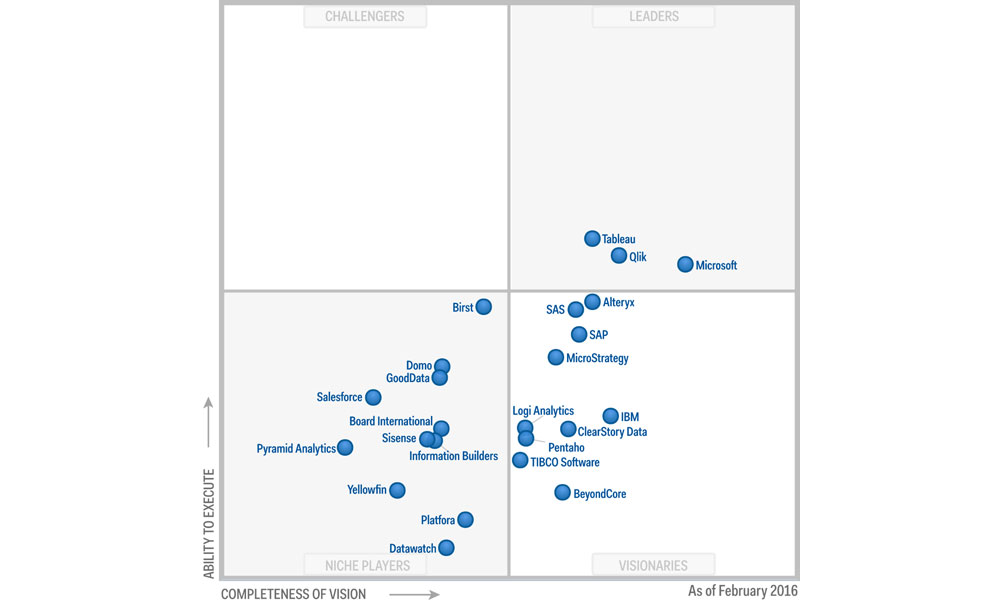 By Craig Larmer, Lead Consultant at Stellar
By Craig Larmer, Lead Consultant at Stellar
You may have noticed that Gartner has released their BI and Analytics Platform Magic Quadrant for 2016.
You can say what you like about the importance of these annual magic quadrants, but a lot of people do use them as reference – and they generate discussions.
This is particularly so for this year’s update because Gartner are redefining what a BI platform is – and that’s caused a big re-shuffle in their evaluation of the market.
First a bit of background. For a while now Gartner have been a proponent of the “bi-modal” delivery model for IT. This is where there are two distinct modes of delivery:
- Mode 1 is the traditional model where solutions are developed, delivered and supported by IT. The focus is on stability and accuracy, with strict governance and change control.
- Mode 2 is the business-driven model, where IT supports an environment for the business to develop their own solutions. The focus is generally on speed of delivery and agility.
Gartner’s position is not to choose one or the other but both! This approach is not too dissimilar from Stellar’s approach to BI delivery where smaller “quick win” projects are interwoven with longer-term “strategic” projects.
With that in mind, Gartner are now splitting the BI tools market in two. The Mode 1 tools, which focus on system-of-record reporting for monitoring stable business processes, are taken out of the selection criteria for this Magic Quadrant and are evaluated in a separate market guide. We’ll let you know when this is available.
The emphasis in this Magic Quadrant is now on tools that deliver Mode 2 functionality so that business users can create solutions to acquire, transform and analyse data without assistance from IT.
With that new definition the whole market for BI tools shifts down in ability to execute as lots of the big players are trying to catch up with this change – and some (e.g. Oracle) drop out of the running completely! Only Tableau, Qlik and Microsoft are in the Leaders quadrant and there are no Challengers identified.
As you can see, Microsoft is deemed the clear leader for “Completeness of Vision” with their PowerBI platform. PowerBI has great potential, which will be realised if they continue to execute well. The problem, however, is that what’s available now is not enough for many enterprise clients on its own. You still need to stitch it together with SharePoint or SQL Server or something else to get the complete range of capabilities. With the release of SQL Server 2016 this year the picture should be a bit clearer with better integration of SQL Server and Power BI.
These are interesting times for BI software vendors and we’re keeping a close eye on it. There’s a group from Stellar heading over to the Gartner conference in Sydney later this month so we’ll have the opportunity to quiz their analysts and swap notes with other BI vendors. We’ll post an update after that.




